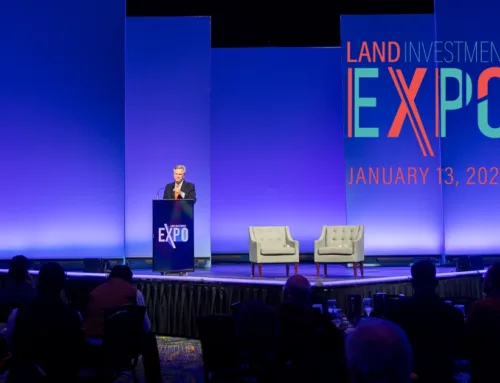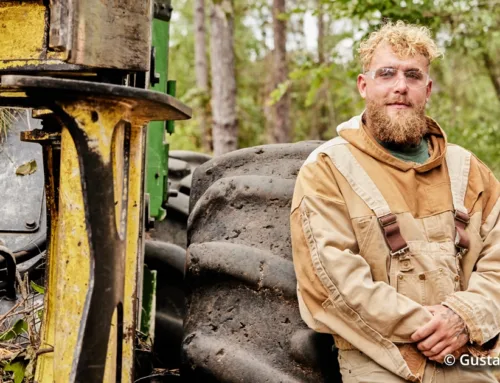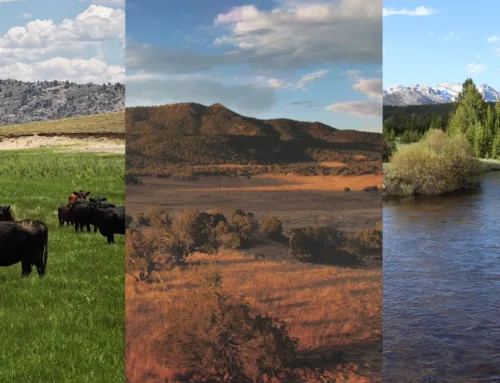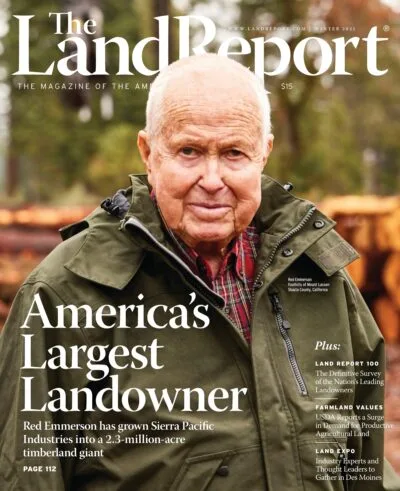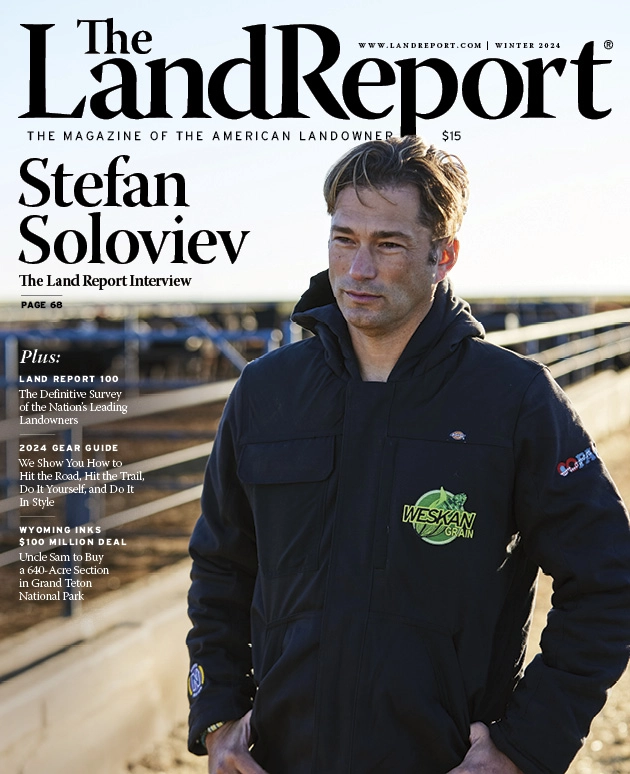Greenland Ranch – A Colorado Crown Jewel
Greenland Ranch – A Colorado Crown Jewel
By Emily Payne
Photography By John Fielder
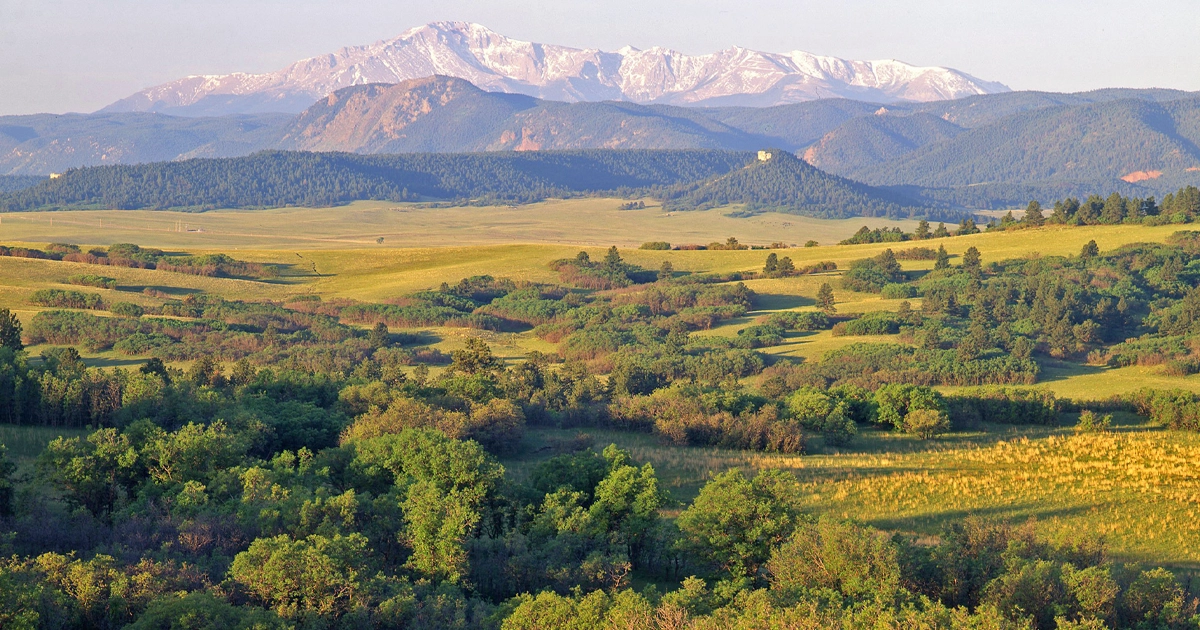
LR_GreenlandRanch-01
MULTIMILLION-DOLLAR VIEW OF PIKE'S PEAK. Costing $78 million in 2000, the preservation effort associated with Greenland Ranch has been valued at $170 million in 2025 dollars.
Greenland Ranch may be the most consequential conservation easement in the United States. You probably haven’t heard of it. But if you love the Rocky Mountains, then you probably have seen it.
Each year, 29 million vehicles parade through Greenland Ranch. It’s the last line of defense against Colorado’s Front Range Urban Corridor, an asphalt jungle that sprawls 150 miles from Fort Collins to Boulder, south to Denver, and on to Colorado Springs and Fort Carson.
Over the last half-century, millions of acres of grasslands — once the grazing ground of bison, elk, and pronghorn — have been plowed under, paved, and transformed into a megaregion now populated by more than 5 million Coloradans.
But the 80,000 vehicles that navigate the stretch of Interstate 25 just north of Colorado Springs each day don’t wind their way around shopping malls or subdivisions. For the eight glorious miles that I-25 bisects Greenland Ranch, commuters see Colorado the way it once was: prairie-to-peaks vistas that extend from Greenland Ranch’s rolling pastures to its iconic buttes to the top of Pikes Peak.
That was the intent of the coalition of partners who protected these 21,600 acres in 2000, including The Conservation Fund, Oklahoma’s Gaylords, Great Outdoors Colorado, Douglas County, and John Malone.
And now, a determined cohort is seeking to protect it from the arrival of an invasive species from Texas: “a ball-capped beaver named Buc-ee that serves as the mascot for a chain of supersized gas stations.”
The Invasive Species
Texas-based Buc-ee’s operates more than 50 travel centers nationwide. Founded in 1982 by Arch “Beaver” Aplin III, the company’s travel centers have garnered a cultlike following much like Chick-fil-A and In-N-Out Burger, thanks in part to its brisket sandwiches, Buc-ee the Beaver merchandise, and “the cleanest restrooms in America.”
Originally the size of a standard convenience store — 3,000 square feet — the company’s new-and-improved travel centers are larger-than-life roadside attractions. Last year, more than 400 superfans lined up before dawn to celebrate the grand opening of the largest Buc-ee’s in the nation, a 74,000-square-foot behemoth 100 miles north of Greenland Ranch in Johnstown. Some even camped out overnight.
But a proposal for a second Colorado Buc-ee’s in Palmer Lake, a small town with just 2,636 residents, has sparked intense controversy. “Stop Buc-ee’s” signs urge residents to “Heave the Beave.” Lawsuits have been filed. Recalls have been instigated. The ultimate plot twist? On June 4, Palmer Lake Mayor Glant Havenar suddenly resigned.
According to published reports, Havenar had been messaging Mark Waller, a local attorney and political lobbyist retained by Buc-ee’s, as well as disparaging constituents and fellow board members during community meetings about the annexation of a 41-acre tract of land for a new Buc-ee’s in an unincorporated part of El Paso County. The tract sits directly off I-25, and the nearest competitor would be miles away.
The site has several downsides, including a lack of municipal services such as water. But the most glaring drawback is that the proposed Buc-ee’s — a 74,000-square-foot travel center with 120 fueling stations and 780 parking spaces — would be situated directly across a two-lane country road from Colorado’s single-largest conservation investment: Greenland Ranch.
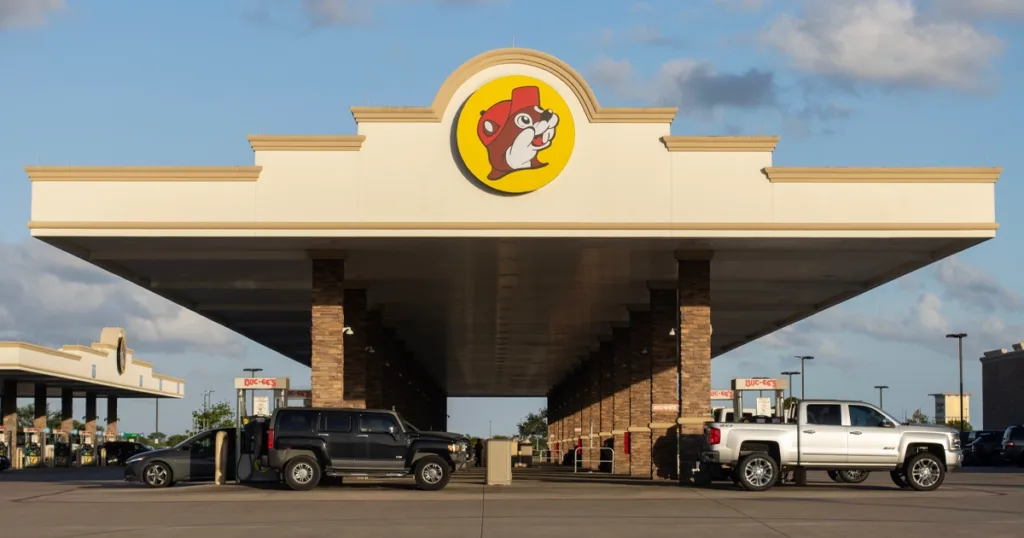
The proposed Buc-ee’s — a 74,000-square-foot travel center with 120 fueling stations and 780 parking spaces — is a stone’s throw from Greenland Ranch, Colorado’s single largest conservation investment.
Protecting Greenland Ranch
Ensuring the legacy of Greenland Ranch was the result of a decades-long effort that can be traced back to the 1970s, when state treasurer (and future Colorado governor) Roy Romer made its preservation a personal priority. In the 1990s, Greenland Ranch belonged to Oklahoma’s Gaylord family, whose many interests included The Oklahoman newspaper, The Grand Ole Opry in Nashville, and The Broadmoor in Colorado Springs.
According to the Denver Post, the Gaylords had already rejected offers of $80 million and $90 million for their historic ranch. That’s when Bass Pro Shops founder Johnny Morris introduced Ed Gaylord Jr. to The Conservation Fund.
Founded in 1985, the Virginia-based organization bills itself as having “created a unique approach for protecting at-risk land and solving America’s toughest conservation challenges.” At Greenland Ranch, The Conservation Fund would prove its mettle by bringing to the table not one, not two, not three, but four conservation partners: Ed Gaylord Jr., Douglas County, Great Outdoors Colorado, and John Malone.
“Fortunately for all of us, the Gaylords were great stewards of the land,” says Sydney Macy, the lead at The Conservation Fund who played a key role in facilitating the transaction. “They kept it in ranching. They expanded it to 22,000 acres. Ed Gaylord Jr. grew up on that property. He worked the ranch, got to know it, and really loved the place.”
The Gaylords’ support was crucial. As the seller, the family held all the cards. To their credit, when Greenland Ranch was appraised for $76.2 million, they agreed to write off $6.2 million as a charitable deduction and net $70 million. Douglas County and Great Outdoors Colorado contributed $17.4 million to purchase a conservation easement and preserve much of the ranch in perpetuity. Douglas County also bought 3,600 acres outright for $1.5 million. And Liberty Media founder John Malone picked up the remainder of the multimillion-dollar tab, incorporating it into his ranching operation.
Former Secretary of the Interior Ken Salazar also played a critical role in the transaction in his capacity as director of the Colorado Department of Natural Resources. Salazar considers the landmark open-space buffer “a Colorado crown jewel.”
All told, the $78 million sale and the preservation of Greenland Ranch in 2000 equates to approximately $170 million in 2025 dollars.
Now, those pristine views are being jeopardized by the proposed Palmer Lake travel center. Although Palmer Lake is currently ground zero of this political firestorm, Buc-ee’s originally approached El Paso County. Once the county stipulated that it would require a state well permit, the town of Monument became the leading contender. According to reporting by Jim Carlton in The Wall Street Journal, however, Monument had rebuffed a recent attempt to annex the very same 41-acre tract for a proposed subdivision — and Waller knew it. A travel center that consumes 1.1 million gallons of water each month would likely get a thumbs-down from Monument. With that in mind, Waller suggested to the director of real-estate development at Buc-ee’s that they approach Palmer Lake’s town council. The goal? To seek passage of a legal maneuver known as a “flagpole annexation.”

The pine-studded 41-acre tract being eyed for a new Buc-ee’s (foreground) sits directly across Palmer Divide Road from Greenland Ranch’s pristine pastures (background), which are bisected by I-25.
Flagpole Annexation
A variety of options are available to municipalities seeking to expand their footprint. In the case of the proposed travel center, the plan would be to extend Palmer Lake’s eastern boundary more than 2 miles to the pine-studded parcel that Buc-ee’s has under contract. The “flagpole” — the southernmost lane of a two-lane country road — would connect the town to the “flag” — the travel center and its fueling stations, parking spaces, and electric-vehicle-charging stations.
Proponents contend that the proposed Buc-ee’s would inject much-needed funds into the bedroom community. The Colorado Springs Gazette editorial board labeled the proposed Buc-ee’s a “never-in-a-lifetime economic panacea” and its flagpole annexation “a pipeline of cash” for the commuter town.
According to a Fiscal Impact Analysis report prepared for Palmer Lake by Economic & Planning Systems, the new Buc-ee’s is forecast in its first full year to generate $31.8 million in taxable retail sales, not including fuel sales. This would increase the town’s sales tax revenue by roughly 30 percent. In addition, Buc-ee’s has agreed to pay for all roadway improvements required by the Town and the Colorado Department of Transportation, including the expansion and reconfiguration of the I-25 and county-line road-interchange ramps, signalization, turn lanes, and other enhancements. Based on payroll numbers from the Johnstown location, the new Buc-ee’s would also create 200 jobs at $17 to $20 per hour.
In addition, Buc-ee’s would make a one-time $350,000 community contribution, pay almost $400,000 in taxes associated with the cost of the improvements, and pay a $150,000 one-time fee in lieu of public-land dedication.
Opponents scoff at the anticipated sales tax windfall. Per the announced agreement, two-thirds of the sales tax revenue would go to the town and one-third to Buc-ee’s for two decades. After 20 years, all sales tax revenue would belong to the town. Based on sales figures at the Johnstown location, however, Palmer Lake would receive $636,000 in sales tax revenue, not the million-dollar figure currently being touted.
The new travel center would also consume nearly one-third of Palmer Lake’s already-strained water usage. Critics claim this estimate to be overly conservative: Town water must also be offered to all residents and potential businesses along the 2-mile flagpole annexation, further taxing the aquifer.
To alleviate the additional demand, Buc-ee’s has agreed to pay $4.297 million for a redundant town well, $4.771 million for an additional well and treatment plant, and $4.948 million for the 12-inch water line that would run to Buc-ee’s. To some locals, however, the company’s multimillion-dollar commitment is the beside the point.
“The water situation in Colorado is much different than in Texas, where [Buc-ee’s] started,” says Bob Welch, who runs 350 stocker yearlings on a grass lease on the portion of Greenland Ranch owned by Douglas County, directly across the street from the proposed Buc-ee’s. “If there’s a Buc-ee’s there, I don’t think we know the full impact that it could render,” Welch says.
Environmental Impact
More difficult to quantify are the site’s direct and indirect impacts on sensitive ecosystems and wildlife corridors. Two miles north of the proposed Buc-ee’s, one of the largest wildlife overpasses in the nation is currently under construction. The $15 million Greenland Wildlife Overpass will span six lanes of I-25 and connect 39,000 acres of big game habitat, including the entire Greenland Ranch, to more than 1 million acres of the Pike National Forest. When completed in December 2025, the overpass is projected to decrease the number of wildlife/vehicle collisions by 90 percent.
Yet some fear that the increased vehicle traffic, human presence, and light and auditory exposure from the proposed Buc-ee’s may threaten the costly benefits of the overpass.
“You think about a 120-pump gas station that’s open 24/7 and just the impact of light [pollution] alone. These are questions that people should ask,” says Erik Glenn, executive director of the Colorado Cattlemen’s Agricultural Land Trust, which holds the conservation easement on the Greenland Ranch. “This will alter and change a really iconic part of Colorado that a lot of people interact with,” he says.
Last but not least, the proposed Buc-ee’s site is directly across Palmer Divide Road from Greenland Ranch itself. The oldest operating cattle ranch along the Front Range is one of the largest protected open spaces in the region and one of the most visible in the nation.
“This is what Colorado is, what people think of Colorado,” says Glenn. “That landscape has elk, pronghorn, and even bighorn sheep, all that close to two major metropolitan areas. There’s been a lot of public investment into that.”
Welch agrees that a Buc-ee’s would neither fit into the landscape nor be aligned with residents’ interests: “It’s kind of gaudy and ostentatious to stick your big gas station right at the top of the Palmer Divide. It flies in the face of what a lot of people worked really hard to do in preserving the viewshed,” he says.
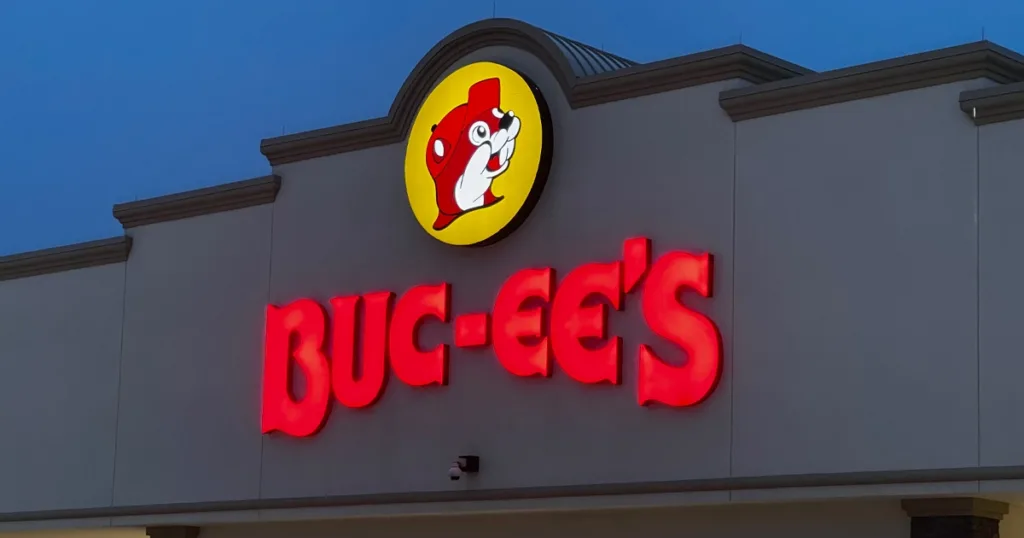
The traffic flow and light pollution associated with the Texas-size travel center could impede the effectiveness of one of the nation’s largest wildlife overpasses, which is currently under construction.
Protecting a Legacy
The potential for Buc-ee’s to threaten this landscape begs the question for many landowners: How can land truly be protected in perpetuity amid rapid urbanization?
“If you don’t preserve every square inch that surrounds these [properties], it’s going to go,” says The Conservation Fund’s Macy. “That’s why we created a vision plan for the I-25 corridor. I knew [conserving] just a strip along the corridor wasn’t going to be enough,” she says.
Conservation easements remain one of the most powerful tools for landowners who seek to protect their livelihood, open space, and legacy from this type of development. This voluntary, legally binding contract between a landowner and a nonprofit or government agency restricts land use and preserves natural, agricultural, or scenic qualities. The landowner retains full ownership of the land while the land trust or government agency is responsible for monitoring and enforcing the terms of the easement. It is intended to remain in place indefinitely.
In many states, including Colorado, landowners can receive tax credits for donating or selling an easement. This provides a monetary benefit to the landowner, security for future generations by keeping the land in its current use in perpetuity, and a public benefit to communities that enjoy its natural resources, scenic views, wildlife habitat, and open space.
Carmen Farmer, senior project manager at Colorado Open Lands, says there is an array of different models of conservation easements. She has seen a variety of win-win solutions for landowners, municipalities, and conservationists, such as conservation easements combined with collaborative water-sharing agreements between agricultural producers and municipalities. Or perhaps a recreational component. Conservation will look different from one community to another, Farmer says, but being open to unconventional collaboration is an important first step.
Other types of agreements have developed to protect agricultural land and open spaces outside of the conservation easement model. Arizona has a number of agricultural-preservation districts, which have been formed to maintain existing agricultural and open-space use. Nevada has 15 agricultural districts, which help protect and promote agricultural land locally. And habitat leases, such as elk-occupancy agreements in Wyoming, compensate landowners who manage their property to protect certain species.
Farmer says that landowners should look to those working in water to find more resources, funding, or opportunities for partnership. Water is increasingly a crucial part of conservation efforts. When farmland is lost, the wildlife that depends on its irrigation, ecosystems, and wetlands disappear too.
“In the arid West, the land without water is a very different equation than the land with water. In order for us to protect the conservation value associated with a lot of our properties in Colorado, we’ve got to have that nexus with water figured out,” says Farmer.
A Balancing Act
As with most controversial issues, context is key. Brooke Fox, CEO of the Colorado Agricultural Leadership Foundation, says the Buc-ee’s debate highlights the need for education around the importance of open spaces and local agricultural production.
“The ag community, for a long time, we didn’t advocate for ourselves,” says Fox. “I think one of the biggest things for ranchers and farmers is to support ag education so the general public can really understand where our food comes from.”
Fox sees a gap in education about how meat, in particular, is produced. Some environmentalists contend that cattle should be taken off ranches, but in the context of Colorado’s rapid urbanization, Fox says that could do more harm than intended.
“If you take the cattle or the sheep off that land, what’s that rancher going to do? They’re going to sell it to development. So which is more environmentally friendly and better for the wildlife?” says Fox. “Converting grasses and rangeland through livestock that graze is a very environmentally friendly and efficient way to convert those calories into protein for human consumption.”
Glenn suggests that landowners first talk to their neighbors about keeping their land in agriculture through tools like conservation easements or water-sharing agreements. “The larger the scale of connected ag we have, the better ag can function,” he says. “It gets harder when just one landowner is trying to do it and the rest of the neighbors aren’t.”
But it can be challenging for agriculturalists to band together and to ascertain which options are available to protect their land. Farmers don’t have time to keep up with what conservation opportunities and funding are out there, says Farmer. She says that outreach and relationship-building with land trusts such as Colorado Open Lands, because they are not affiliated with municipalities or the state, can help to bridge that gap.
“You’ve got a lot of resources in the conservation community. Don’t feel like you need to investigate all on your own. Reach out to your local land trust,” Farmer tells local agriculturalists. Communities can also facilitate productive conversations through tools like intergovernmental agreements, in which regions are contractually bound to limit growth or protect agricultural and open space.
“There’s a little bit of regional planning that can go into these efforts, and that includes both the municipalities and counties but also the individual landowners,” says Farmer.
Colorado faces a tricky balance on a statewide level: protecting its open spaces while maintaining a healthy local agricultural system and combating pernicious housing shortages. There is no one solution to address this tension, but starting conversations now could help prevent confrontations that towns such as Palmer Lake are seeing. Landowners play a critical role.
“I am a strong proponent of property rights but also a proponent of communities shaping their destiny,” says Fox. “I think communities have the choice to shape their vision of the future and to think through it.”
For Glenn, this conversation goes to the core of what it means to live, work, recreate, and grow on Western land. Developments like Buc-ee’s reflect what communities care about and are willing to invest in. If the project moves forward, it will stand in direct opposition to millions of dollars of prior investment to natural spaces.
“The question I have is, ‘What do we as Coloradans value?’” asks Glenn.
After the issue went to press, Palmer Lake residents voted on September to recall Palmer Lake Board of Trustees Shana Ball and Kevin Dreher. Both trustees were accused of “unlawfully and recklessly” approving the eligibility of the Buc-ee’s request. In addition, a proposed ordinance that would require any annexation by the town must be presented to the voters passed 765 to 375.
Published in The Land Report Summer 2025.


